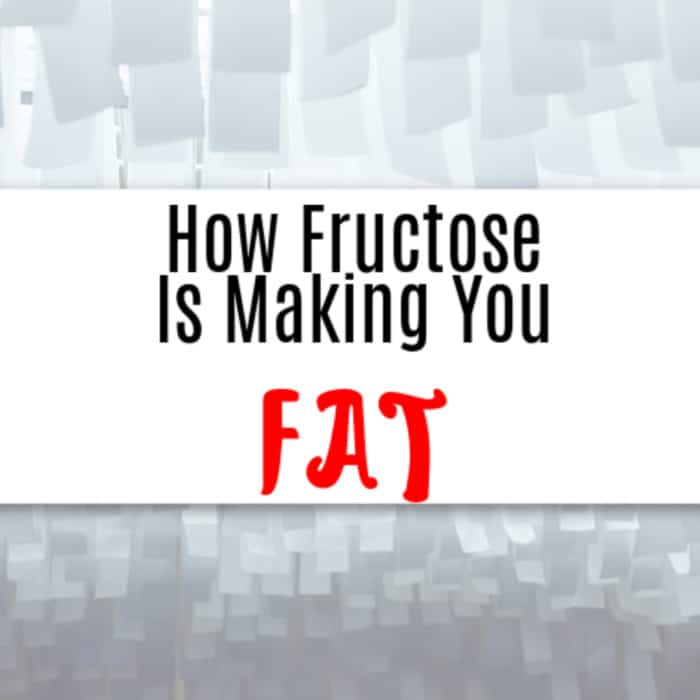
How Fructose is Making You Fat: Part One
The evidence of this is overwhelming. (If you would like to see massive amounts of that evidence broken down in easy to read formats, I recommend Michael Gillespie’s Sweet Poison, Dr Robert Lustig’s Fat Chance or Richard Johnson’s Sugar Fix. Or if you like to watch YouTube videos, watch this.)
As I read through these works and began to digest what they were teaching, I desperately wanted to tell people what I learned. Since I am a blogger by trade, a blog seemed like the most logical way to do this.
If you are here and you have struggled with your weight (As I have done for most of my life) those posts are for you because Fructose is making you fat.

Where is it found?
The first thing you need to know about it is where you can find it. It occurs naturally in most fruits and some vegetables but where you will primarily find it is in common table sugar.
What we normally call sugar (the white or brown stuff we add to our morning coffee) is actually 2 sugars bonded together. A sugar molecule is half Sucrose and half Fructose. As we will learn, our bodies are adapted to deal with the sucrose, but have difficulty with the Fructose.

Another common place we find fructose now is High Fructose Corn Syrup, or HFCS. HFCS is a relatively new invention (First created in 1957) that enabled us to sweeten foods far more cheaply than before.
Food manufacturers have started adding HFCS to EVERYTHING. Out of approximately 600,000 different food products available at our grocery stores, 80% of them contain sugar or HFCS. If you eat groceries (and who doesn’t) chances are you are eating far more sugar than you realize.
How does it make us fat?
We are glucose-burning machines. What gasoline is to a car, glucose is to us. We are finely-tuned machines when it comes to dealing with almost any substance we put into our bodies.
If we eat enough fat, our body sees that and releases hormones that make us not want to eat fat for a while. Same with carbs, or salt almost any other food on the earth. The one thing we don’t really have a mechanism in place to deal with is fructose.
This made sense for most of human history. Fruits were fairly difficult to obtain. We didn’t have supermarkets, growing them was time-consuming and they tended to spoil quickly.

On those rare occasions where we were able to enjoy a nice orange or apple, we didn’t bother developing a way to regulate it. Our bodies were just delighted to have such a rich source of energy and it converted the fructose to fat for storage as quickly as it could. Then we found out we could refine sugar and things began to change.
We discovered that you could separate out the sucrose from Sugarcane or beets and get that glorious sweet stuff separated from that pesky fiber that tended to fill us up. This made it very easy store and sell, thus the sugar trade was born.
Even with this, sugar was a little pricey and you only used in your morning coffee and occasional sweet treat. Then soft drinks were invented. Now we could all drink sugar all day long.
Shortly thereafter, we got HFCS and we were putting it everywhere because it costs almost nothing compared to sugar.
If all the fructose we were consuming was just empty calories, this would be troubling but not disastrous. The issue becomes what it does to our bodies. Our bodies don’t “see” fructose so it has trouble regulating our appetites when we consume it.
Let’s say we eat a meal that is 800 calories but 200 of these calories come from fructose. Our bodies can see 600 of those calories and will regulate our appetites accordingly.
If 600 calories is enough to fill us up, we will feel full. The only problem is that we didn’t eat 600 calories, we ate 800. Those extra 200 calories were just converted to fat and forgotten about.

Have you ever wondered why you can drink a giant Coke and still have room for a Value Meal but if you drink an 8oz glass of milk you feel full for hours?
Your body can see everything in that Milk (provided you didn’t sweeten it with Hershey’s syrup or something.) but that Coke is metabolically invisible. Repeat those extra 200 calories at every meal and it’s no wonder we are getting bigger as a nation.
This isn’t even close to the only problems fructose causes. It is a dangerous toxin that does amazingly bad things to our organs, especially the liver, kidneys and heart. We will look at each of these thing in the next few weeks.
Look here to see more in this series



One thought on “How Fructose is Making You Fat: Part One”
-
Pingback: Why Fructose is Making You Fat- Part Two - My Sugar Free Journey
Leave a Reply